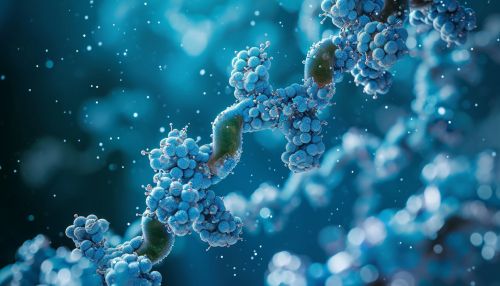Nonribosomal Peptide
Introduction
Nonribosomal peptides (NRPs) are a class of peptides that are assembled by a specific group of enzymes called nonribosomal peptide synthetases (NRPSs), as opposed to ribosomal peptides, which are synthesized on ribosomes. NRPs are a significant group of natural products with a broad range of biological activities and pharmacological properties.


Nonribosomal Peptide Synthetases
Nonribosomal peptide synthetases (NRPSs) are large, multimodular enzymes that function in an assembly line fashion. Each module is responsible for the incorporation and modification of a single amino acid residue. The modules are organized in a linear order, reflecting the sequence of the peptide product. Each module consists of several domains, each of which carries out a specific function in the peptide synthesis process.
Structure of Nonribosomal Peptides
The structure of NRPs is highly diverse, reflecting the wide range of substrates that can be incorporated by NRPSs. In addition to the 20 standard amino acids, NRPSs can incorporate non-proteinogenic amino acids, such as D-amino acids, hydroxy acids, and fatty acids, among others. This leads to a vast structural diversity, which is further enhanced by various modifications, such as cyclization, methylation, hydroxylation, and glycosylation.
Biosynthesis of Nonribosomal Peptides
The biosynthesis of NRPs is a complex process that involves the coordinated action of multiple NRPS modules. The first step in the process is the activation of the amino acid substrate by the adenylation domain, which forms an aminoacyl-adenylate. The activated amino acid is then transferred to the peptidyl carrier protein domain, where it is attached via a thioester bond. The condensation domain then catalyzes the formation of a peptide bond between the growing peptide chain and the incoming amino acid. Once the peptide chain has been assembled, it is released from the NRPS by the thioesterase domain, which can also catalyze cyclization to form cyclic peptides.
Biological Activity and Applications
Nonribosomal peptides have a wide range of biological activities, including antibacterial, antifungal, antiviral, and anticancer activities. Many NRPs are used in clinical practice as antibiotics, immunosuppressants, and anticancer drugs. For example, the antibiotic vancomycin, the immunosuppressant cyclosporine, and the anticancer drug bleomycin are all nonribosomal peptides.
Future Perspectives
The study of nonribosomal peptides and their biosynthesis has the potential to lead to the discovery of new drugs and therapeutic agents. With the advent of modern techniques such as genome mining and synthetic biology, it is now possible to identify and manipulate NRPS genes, opening up new possibilities for the production of novel NRPs with improved properties.
